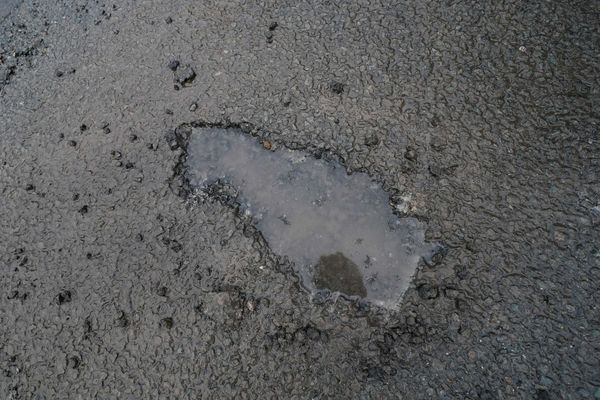
I almost didn't go.
After spending several weeks running around Lisbon, Porto, the sun-drenched beach region of Algarve, and everywhere in between, I thought: Why not relax on my last day in Portugal and avoid a place often described as "Disneyland for adults"?
What a mistake that would've been.
Only 15 miles from Lisbon, Sintra is about as fairy-tale Portugal as it gets. Designated as a Unesco World Heritage Site, the picturesque city is on the Portuguese Riviera and among the Sintra Mountains, a verdant range dense with pines, oaks and wildlife. It's long been known as the setting of several myths, legends and supernatural happenings in Portugal.
The otherworldly air is enhanced by the numerous palaces, villas, mansions, churches and castles ensconced in the forested mountain peaks.
While there are more than half a dozen sites to visit, the most stunning two, in my opinion, are the Pena National Palace and the Castle of the Moors. The architectural feats — built in 1840 and the ninth century, respectively — best exhibit how Sintra has been a romantic destination throughout the ages.
The Pena Palace is made of dreams. At the top of a hill to be visible in every direction, and often enveloped in fog, the palace is a tapestry of colours and styles ranging from Romantic to Islamic to Gothic, surrounded by 500 acres of winding paths, gardens and exotic trees.
You're likely to feel as if you are walking into a magical kingdom — I certainly did on my recent visit to the palace and the surrounding castles and gardens in Sintra. Here's what it was like.
I got to Sintra in the late afternoon, which turned out to be a blessing in disguise. While there was still an hour line to get into the Pena Palace, the crowds had started to thin. In the summer months, many of Sintra's sights are open until 7 or 8pm, so I still had plenty of time.
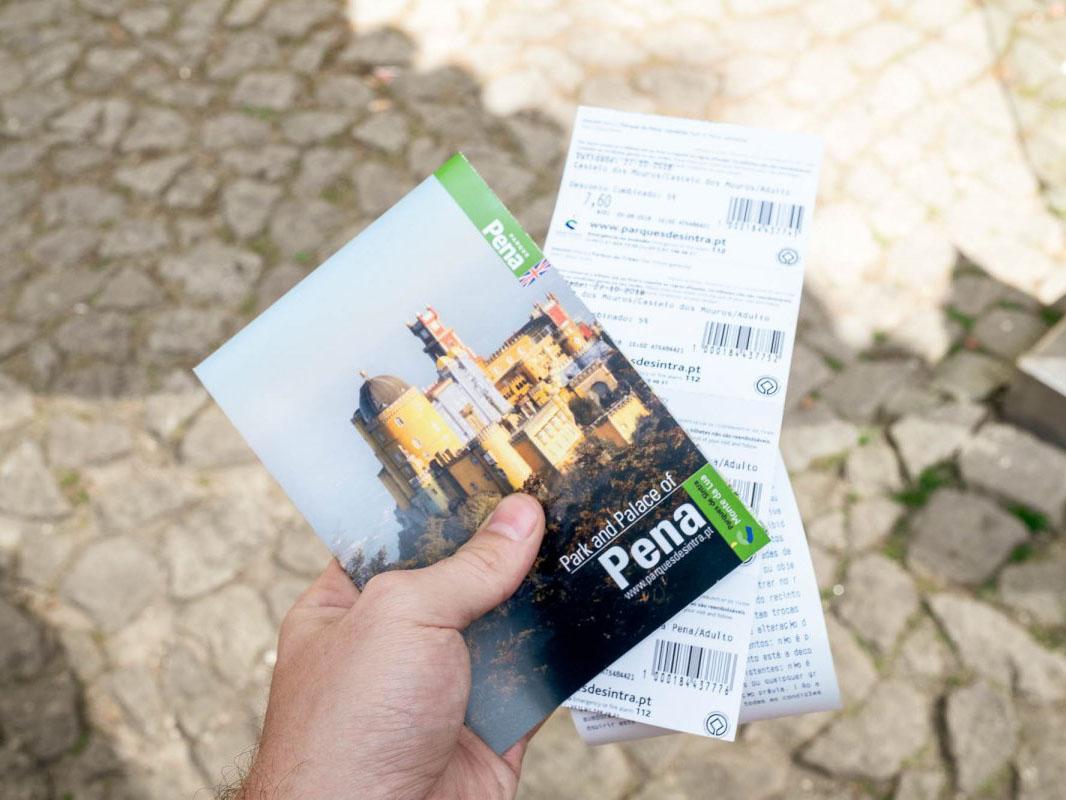
The ticket seller recommended I visit the Castle of the Moors before Pena Palace, as by the time I was done there would no longer be a line. When in doubt, a hard and fast rule of travel is "trust the locals." The walk to the Castle of the Moors gave me my first look at the dense forests of the Sintra Mountains.
The Castle of the Moors was constructed in the eighth and ninth centuries by the Muslim Moors who conquered Portugal and Spain in medieval times.
The expansive castle was designed to endure long sieges.
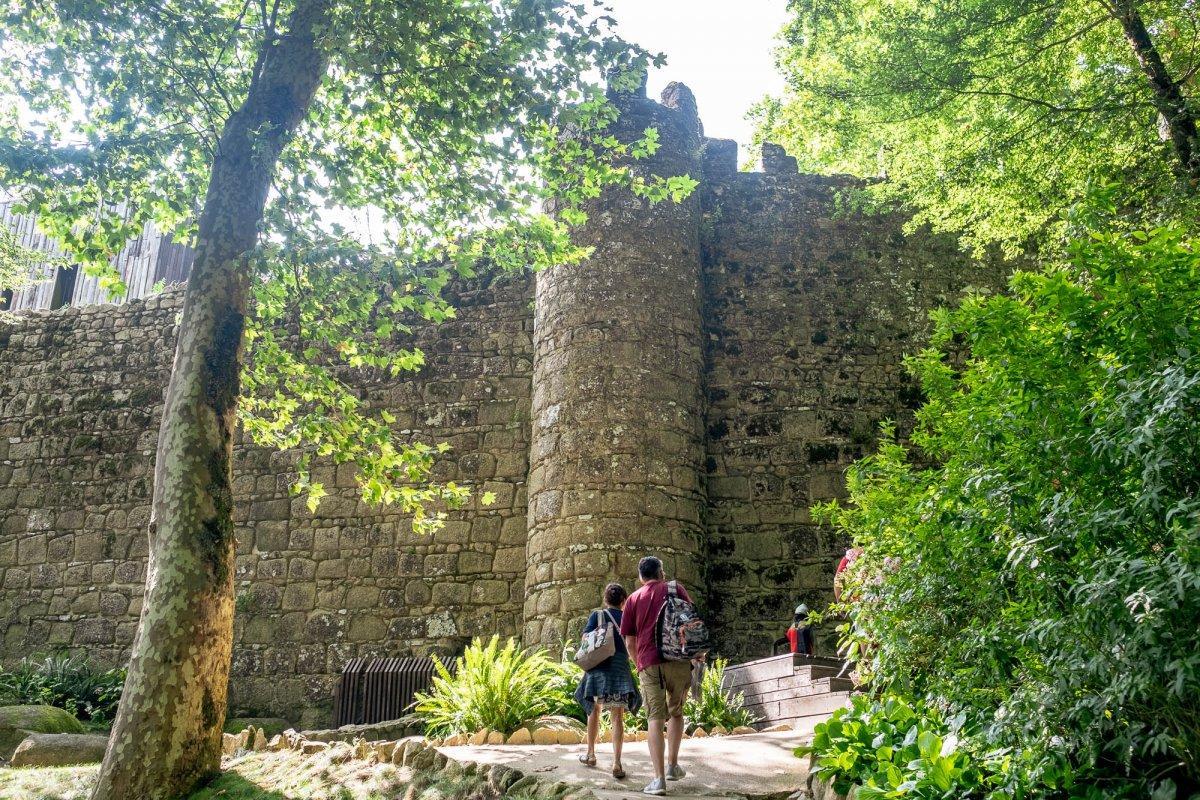
It's hard to see the scope of the castle at first, but I was immediately impressed by the preservation of all the stone walls. King Ferdinand II, who commissioned the Pena Palace, had the Castle of the Moors restored in the 1800s so that it would be a feature of the gardens around his palace.
The majesty of the castle hits you when you stand up on the stone parapet. It reminded me of a mini Great Wall, with its stone walls that swoop and bend with the contours of the mountain.
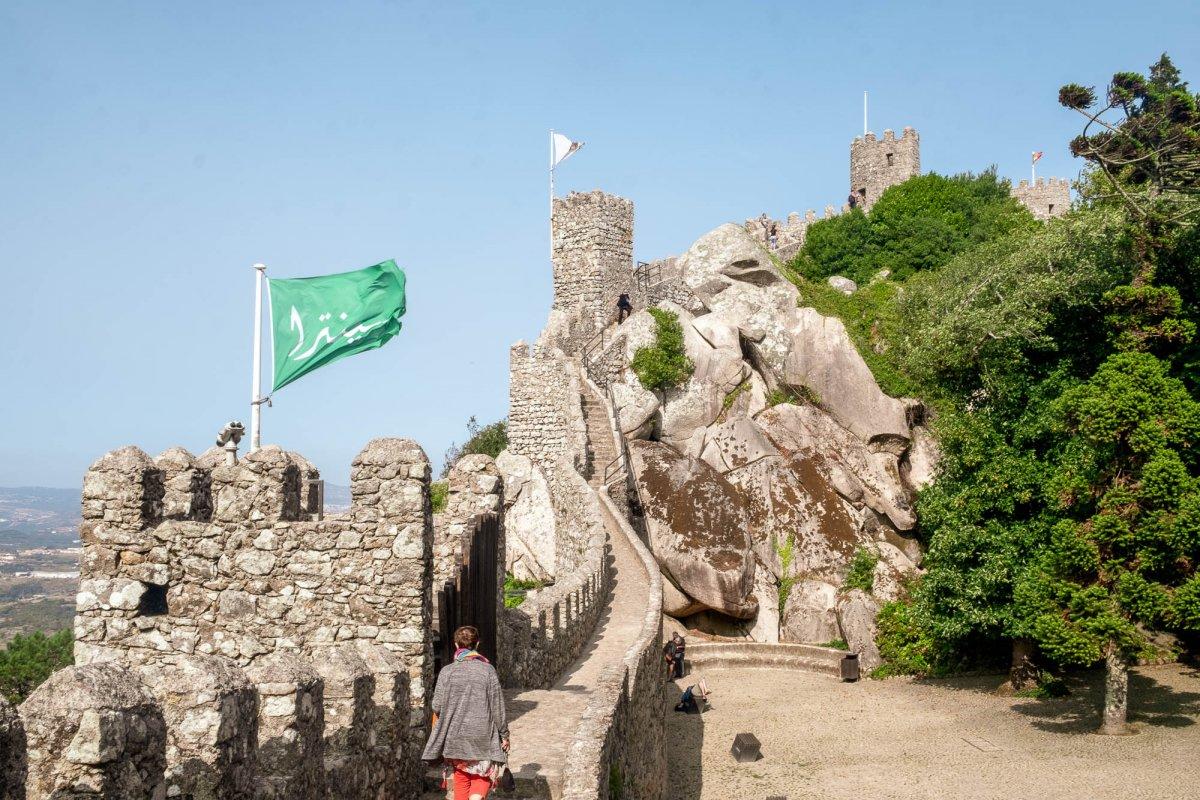
As I trekked up and down the seemingly infinite stairs, I was also reminded of how exhausting it was to hike the Great Wall. At least it wasn't hot; though the late August day was bright and sunny, there was a breeze on the mountain. I could see why royals and the wealthy have long stayed in Sintra during the summer months.
The castle's main purpose was to guard both the town of Sintra, below the castle, and the city of Lisbon, 15 miles away.
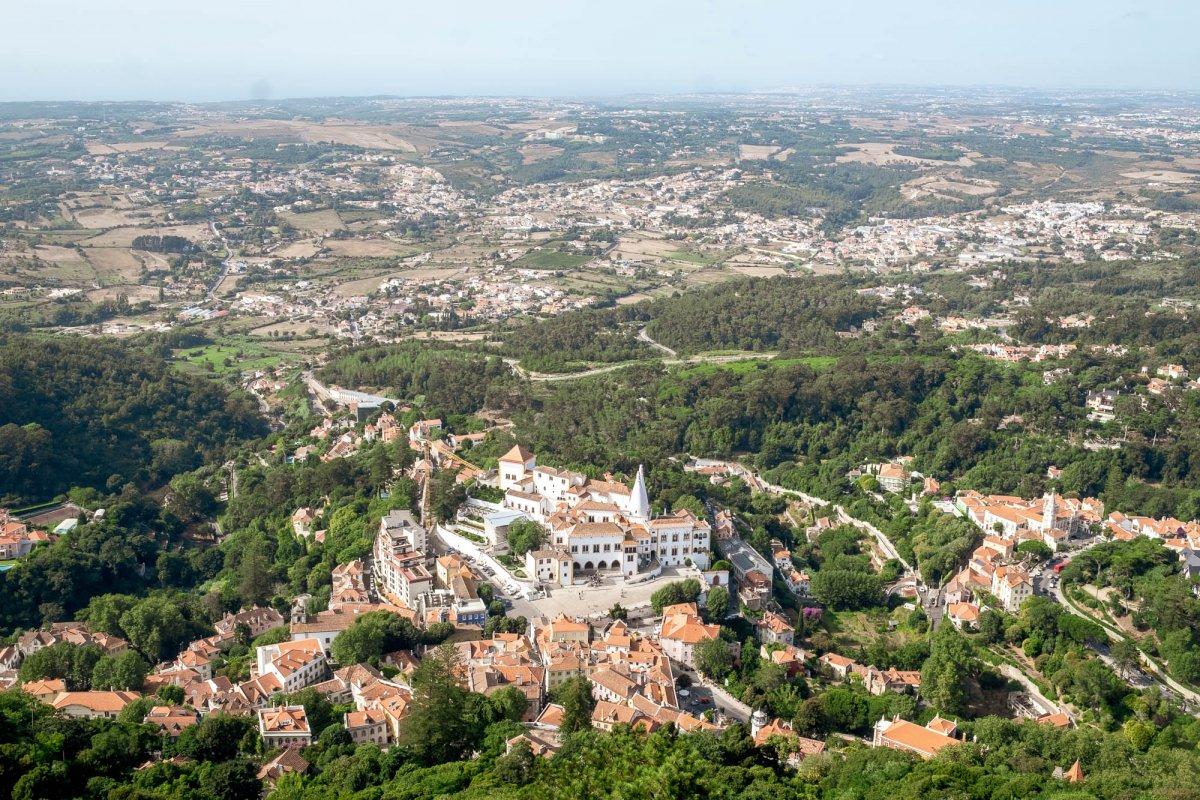
The Moors and Christians fought for centuries over the castle until Afonso I, the first king of Portugal, conquered Lisbon. The castle's significance was as symbolic as it was strategic.
The castle fell into disrepair after the conquest and suffered much damage during the earthquake of 1755. But Ferdinand, a highly educated German prince who was the president of the Royal Academy of Sciences and the Arts, loved the castle and restored it.
From the top of the castle, I caught a view of Sintra's crown jewel — and Ferdinand's magnum opus — the Pena Palace. Even from afar, the fascinating palace casts an imposing shadow upon the mountain.
Before I could get to the Pena Palace, however, I had to walk through the palace gardens, which are sight unto themselves. The park is 500 acres of winding paths, pavilions, bridges, ponds, and exotic trees.
When I entered the gardens, I noticed the "Valley of the Lakes," a string of five lakes surrounded by the lush forest. In the centre of the first lake is a little castle for ducks.
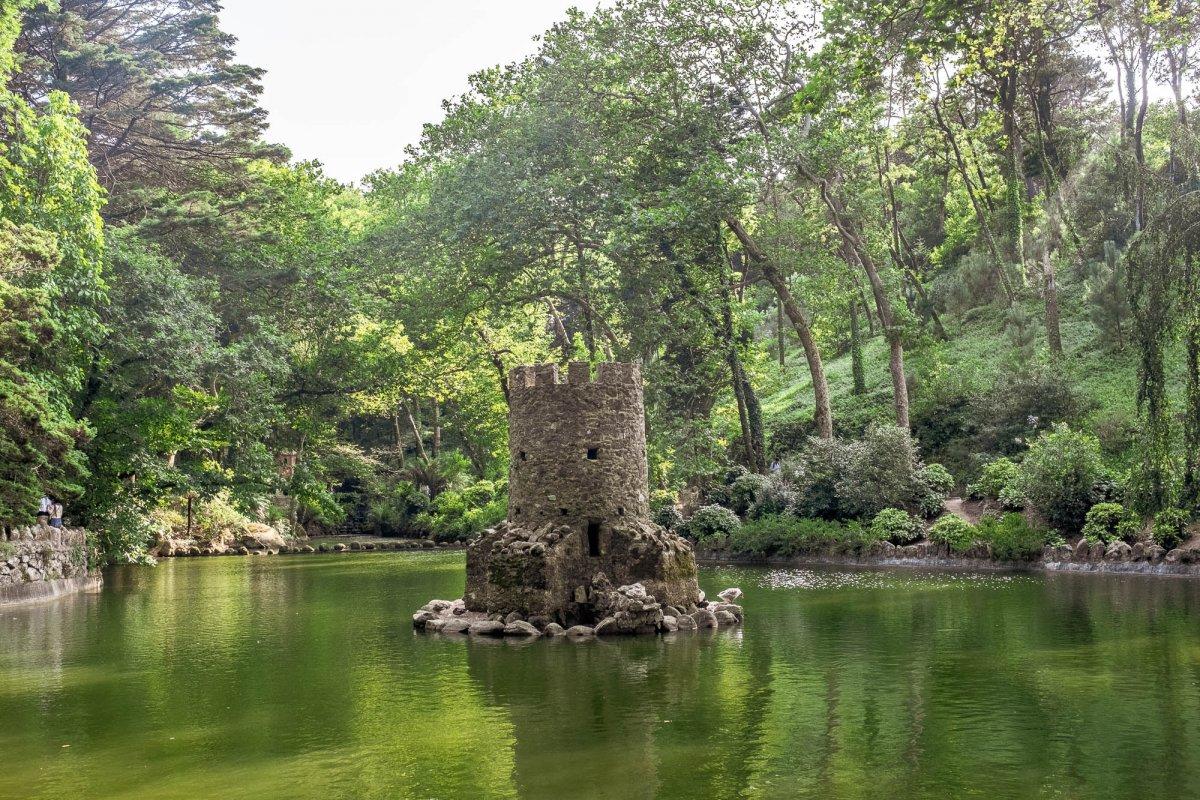
The Danish author Hans Christian Andersen, one of the most famous fairy-tale writers in history, spent much time in Sintra, once describing it as "where nature and art complete each other wonderfully."
I think these magical-looking gardens must have inspired some of Andersen's fairy tales.
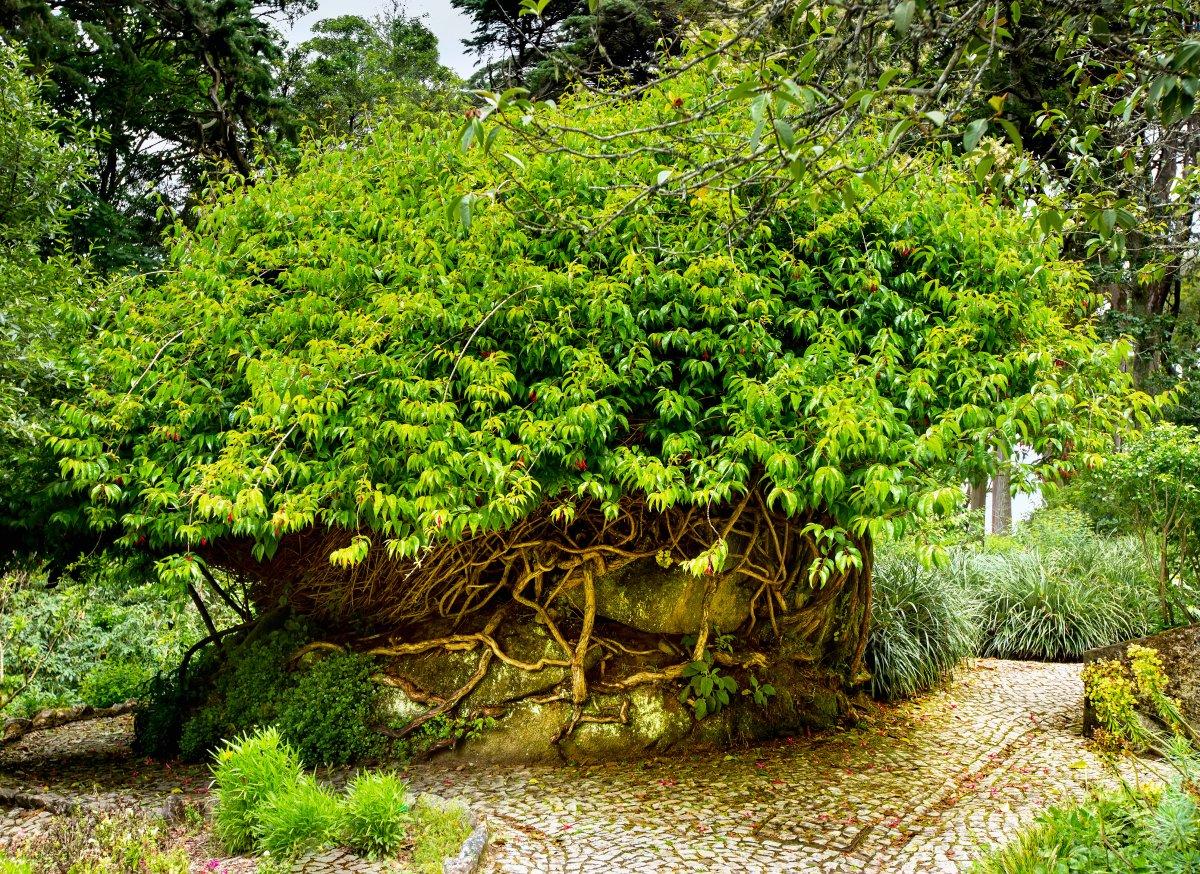
The park was designed as a labyrinth and is full of narrow paths, secret shortcuts, and trees from all over the world, including sequoias from America, gingkos from China, cryptomeria from Japan, ferns from Australia and succulents from Africa.
As I crested the hill, the trees thinned out and I hit a curving road. When I looked up, I saw Pena Palace up close for the first time. I don't know what I was expecting, but it certainly wasn't this symphonic mash-up of colours and styles.
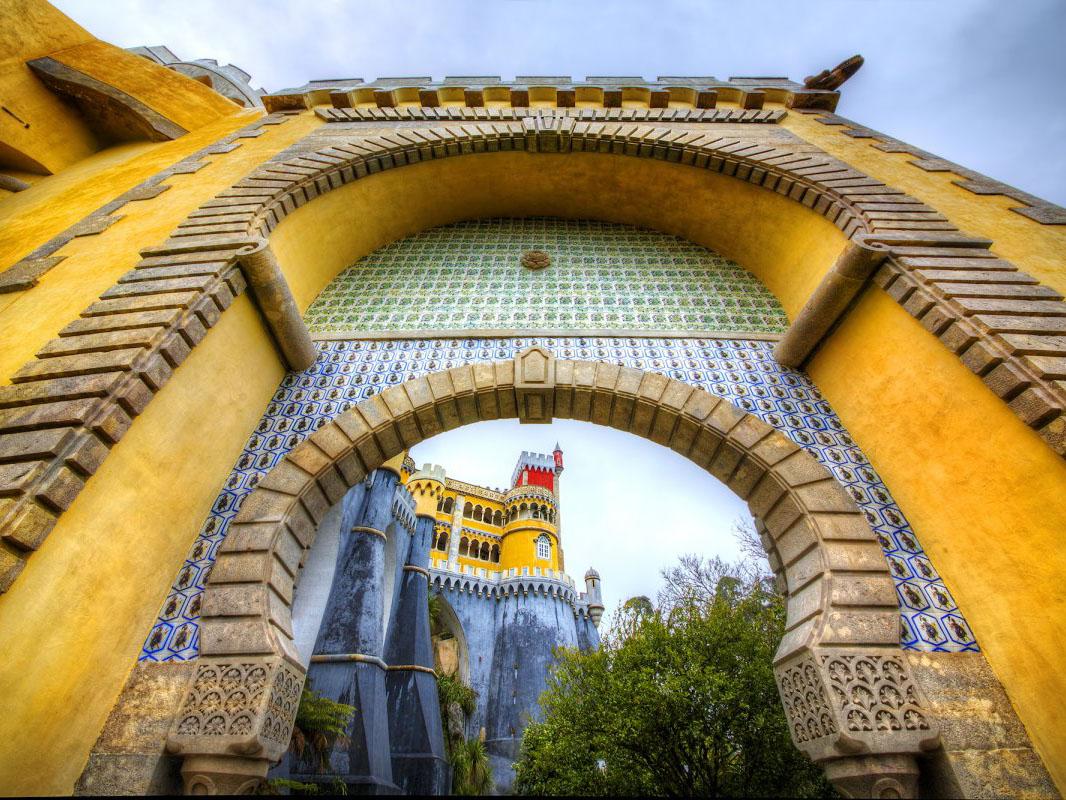
Known by many as the artist-king, Ferdinand commissioned an architect, Wilhelm Ludwig von Eschwege, to build the palace incorporating architectural styles from all over the world. To enter, I passed through the "Door of Alhambra," a neo-Moorish gateway inspired by the "Alhambra Door of Justice" in Granada, Spain.
As I looked at the castle, I felt as though I'd stepped through Alice's Looking Glass into Wonderland. It seemed impossible to imagine that a real architect would dare to smush together medieval, Renaissance, Gothic, Moorish and Manueline (Portuguese neo-Gothic) architecture.
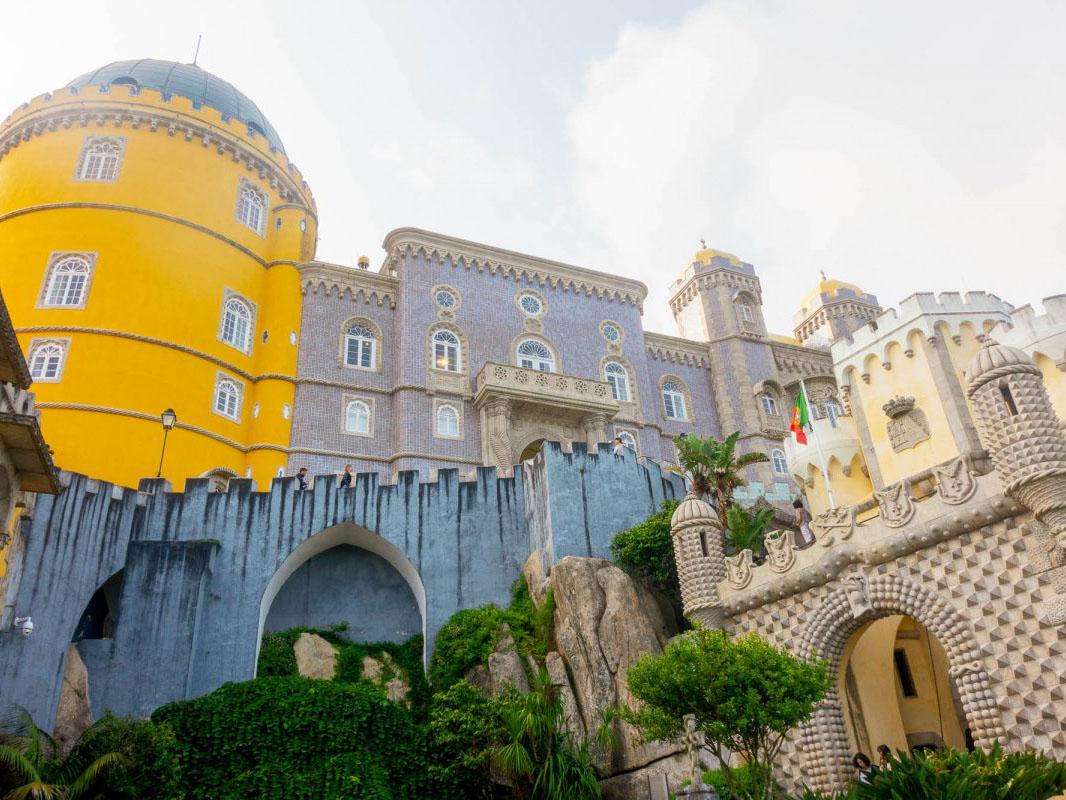
The palace's bright colour palette of yellow and red should be garish — but set in the dark green landscape, it feels refreshing.
I headed up the path to see inside the palace. While the palace was built in 1840, the history of the site dates back to the Middle Ages. Jeronimos monks lived in a monastery and tended to a chapel there beginning in 1503.
But the monastery was damaged during a lightning strike in the 1700s and destroyed by the earthquake in 1755. When Ferdinand decided to build his palace on the site, he had the monastery building and its clock tower restored. It serves as one of the complex's four sections.
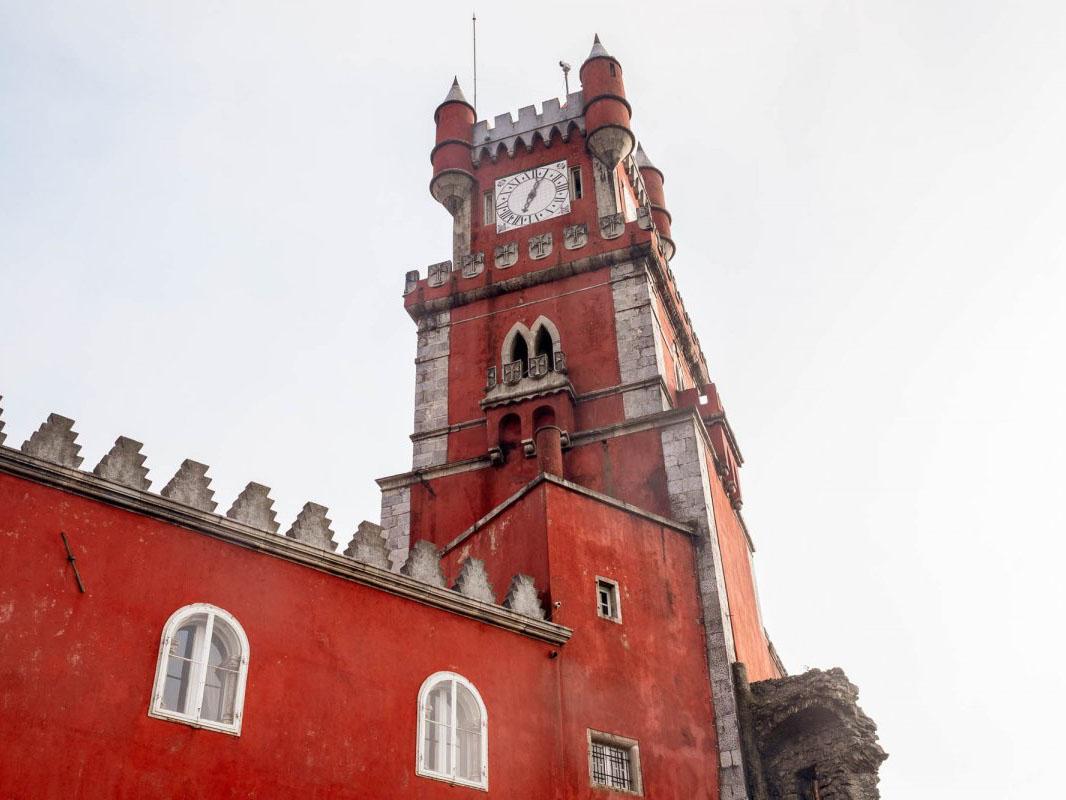
As I walked into the palace's interior, I noticed that the mash-up of styles extended to the smallest details, like this Moorish stonework.
The palace, situated around an open courtyard, is adorned with azulejos, the Portuguese ceramic tile art that can be found all over the country.
The rooms were decorated in much the same sumptuous manner as they were when the royal family fled the palace in 1910 after the Republican revolution.
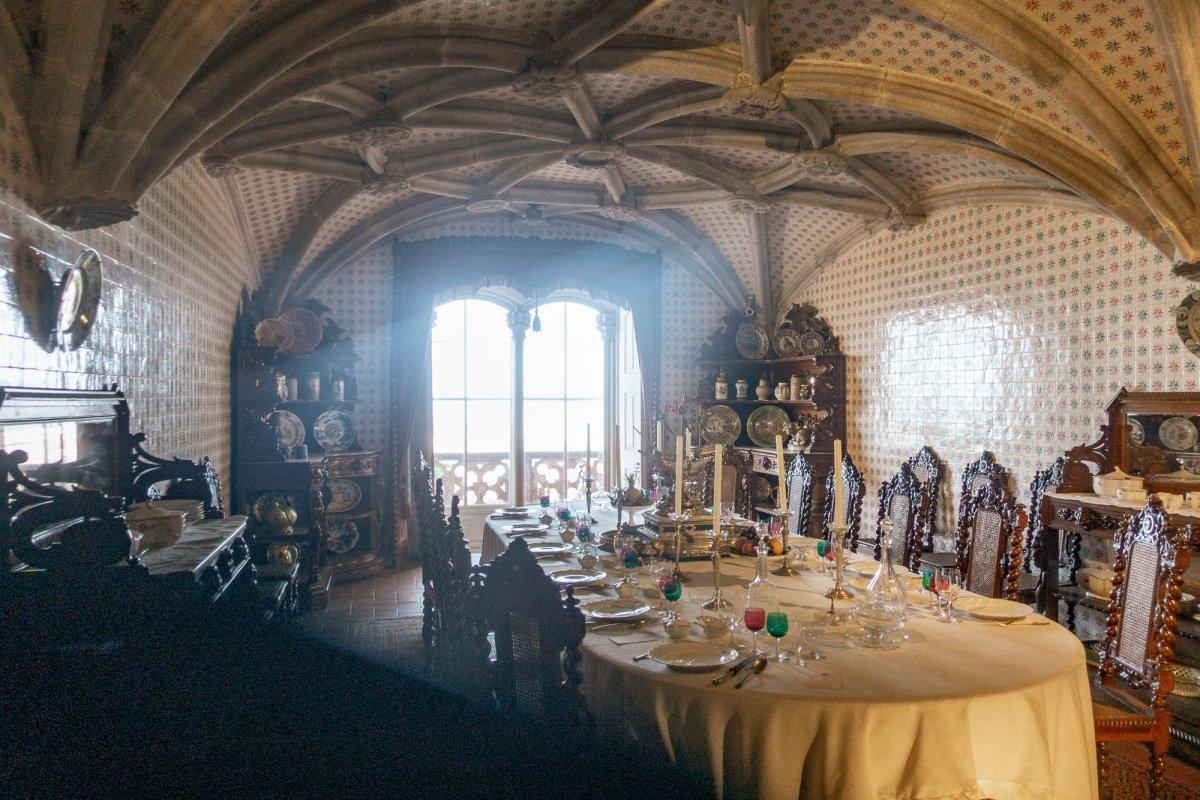
After seeing the extravagant way the royal family's summer palace was decorated, I could sympathise with the Portuguese for overthrowing the dynasty.
Much of the interior decorations had subtle nods to the arts, culture and science of the times. There were many paintings and sculptures made in the style of Scientific Romanticism, which was influenced by Greek mythology.
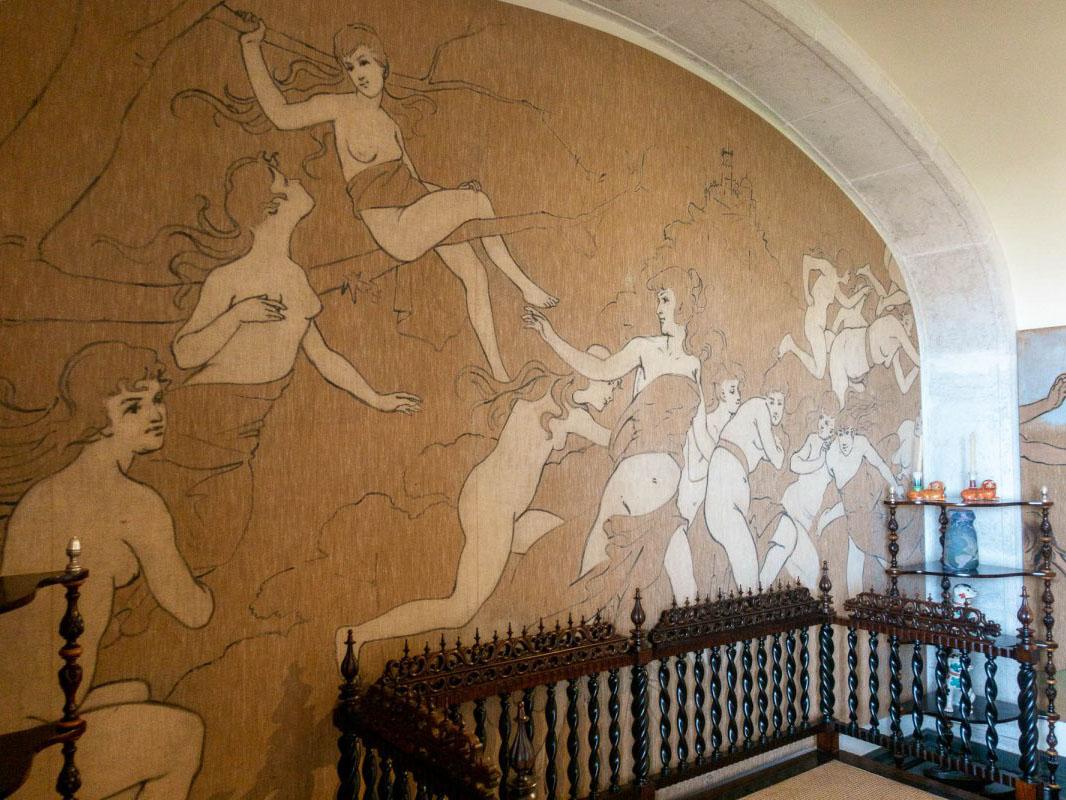
While the palace's interior was stuffed with gilded sculptures and chandeliers and furniture of rich mahogany, I found the exterior far more visually interesting. You can look at rich people's stuff for only so long.
Outside the kitchen was a cafe with some tables, with a spectacular view of the Sintra Mountains. It was amazing how much cooler the climate was at the top of the castle than in Lisbon, just 30 minutes away.
The best place to see the scope of Ferdinand and von Eschwege's architectural work was on the other side. You pass through the gateway into this courtyard, which faces the mountainside.
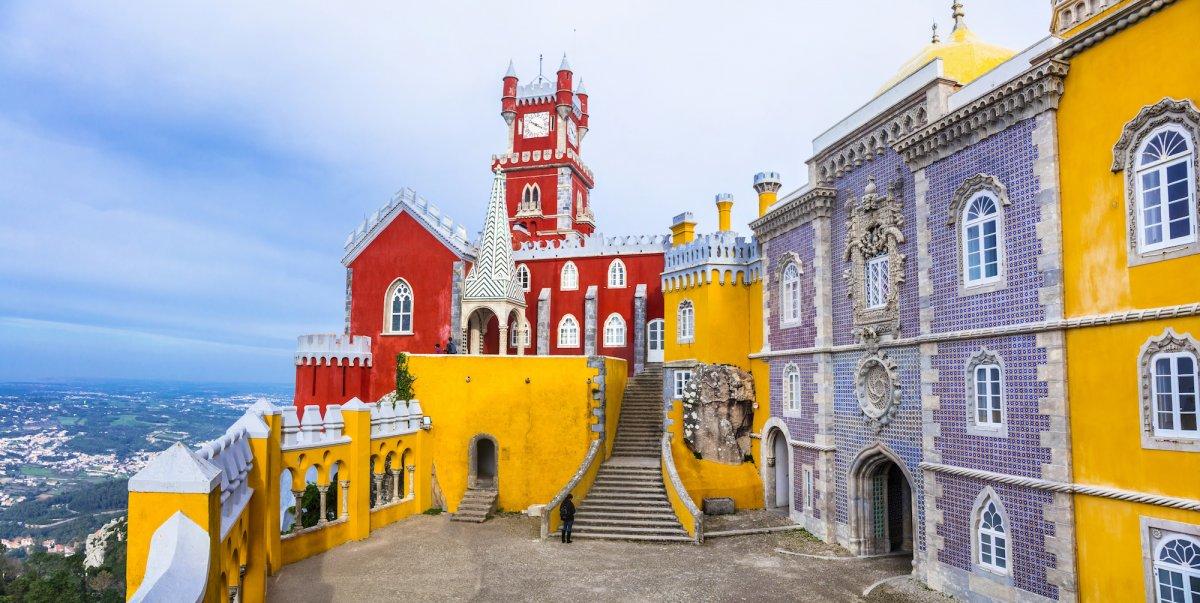
The red structure is the restored original part of the monastery that once housed 18 monks of the Order of Saint Jerome. The chapel has been preserved.
The interior of the chapel was an exquisite piece of Gothic architecture, but the most impressive thing, to me, was this stained-glass window that covers one side of the chapel.
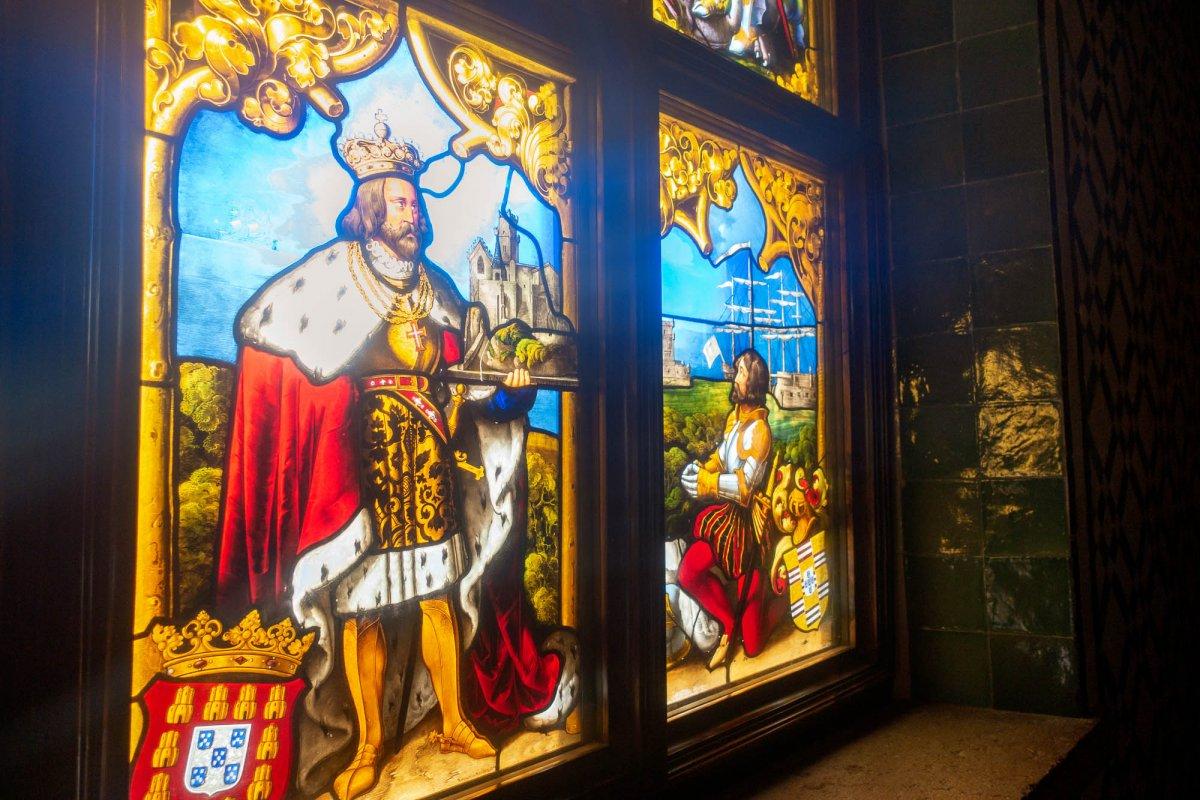
The real star of the show, of course, was the view back towards the castle. While the palace's Moorish-style onion dome should look out of place with Manueline architecture, the combination was surreal and even more so when you look out on the mountainous landscape below.
As I stood up there, the wind whipped around me and a fog had started to coat the palace. It was cold. I can't imagine being there in the winter.
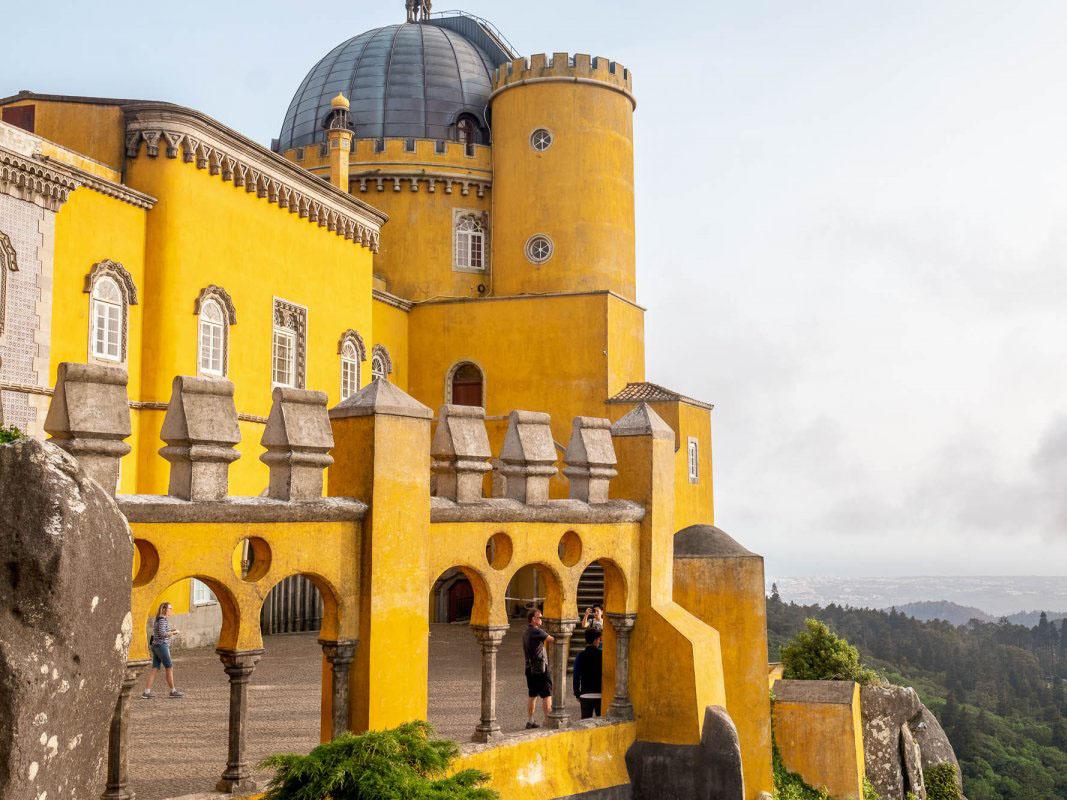
But in August, it was a welcome respite from Portugal's balmy summer heat.
The walk back down through the palace's gardens was even more magical than the way up, as I was no longer rushing to get to the castle and dusk was starting to fall. It would be easy to get lost in here. But I suppose that wouldn't be such a bad thing.
Read more:
• What it's like to travel in premium economy on the budget airline that flies from New York to London for $69
• We visited the 'McDonald's of the Philippines' — here's what it's like
• A hurricane bringing 90 mph winds and a risk of life-threatening floods is closing in on the US East Coast
Read the original article on Business Insider UK. © 2016. Follow Business Insider UK on Twitter.





